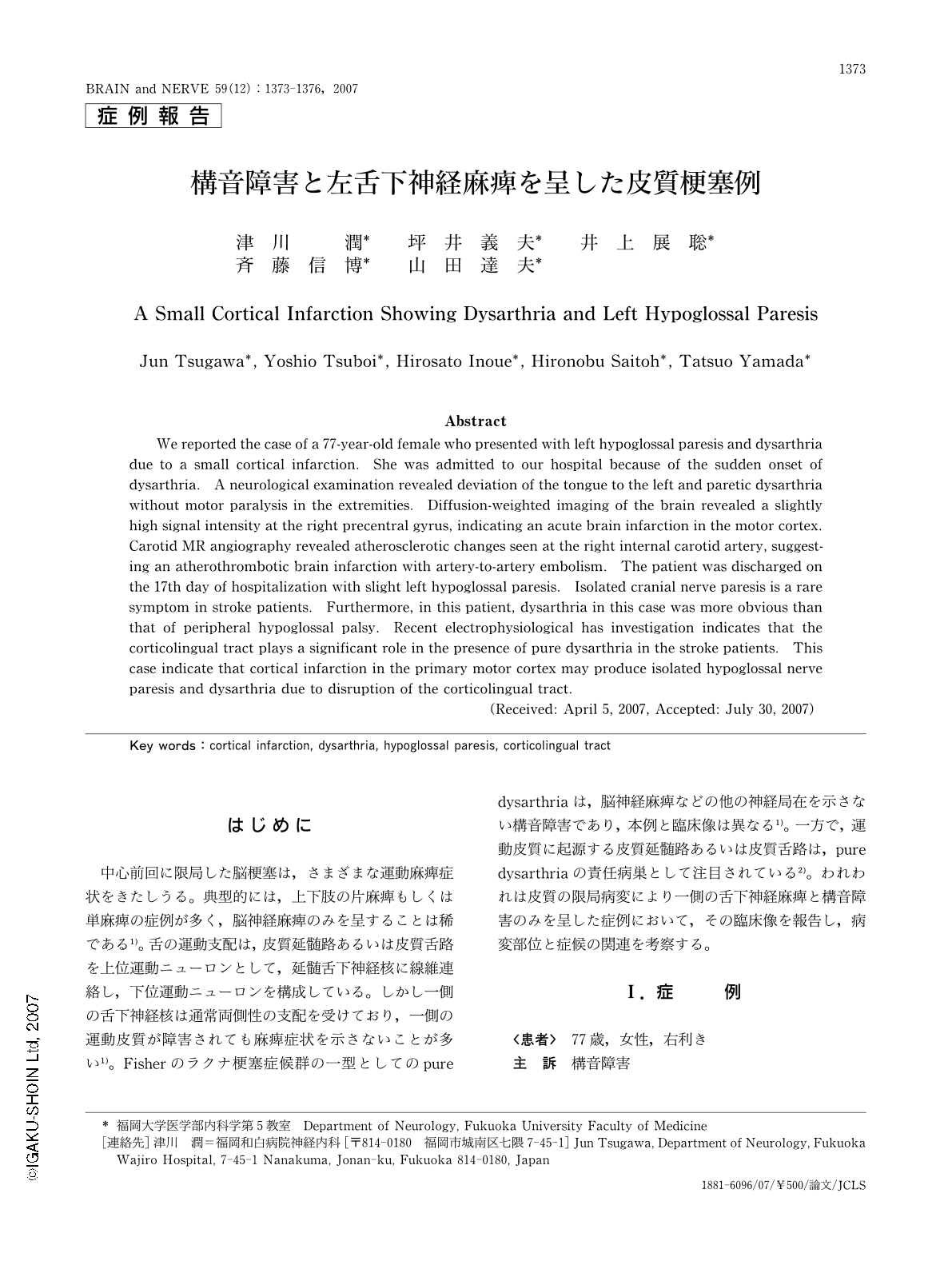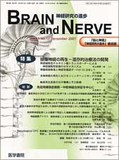Japanese
English
- 有料閲覧
- Abstract 文献概要
- 1ページ目 Look Inside
- 参考文献 Reference
はじめに
中心前回に限局した脳梗塞は,さまざまな運動麻痺症状をきたしうる。典型的には,上下肢の片麻痺もしくは単麻痺の症例が多く,脳神経麻痺のみを呈することは稀である1)。舌の運動支配は,皮質延髄路あるいは皮質舌路を上位運動ニューロンとして,延髄舌下神経核に線維連絡し,下位運動ニューロンを構成している。しかし一側の舌下神経核は通常両側性の支配を受けており,一側の運動皮質が障害されても麻痺症状を示さないことが多い1)。Fisherのラクナ梗塞症候群の一型としてのpure dysarthriaは,脳神経麻痺などの他の神経局在を示さない構音障害であり,本例と臨床像は異なる1)。一方で,運動皮質に起源する皮質延髄路あるいは皮質舌路は,pure dysarthriaの責任病巣として注目されている2)。われわれは皮質の限局病変により一側の舌下神経麻痺と構音障害のみを呈した症例において,その臨床像を報告し,病変部位と症候の関連を考察する。
Abstract
We reported the case of a 77-year-old female who presented with left hypoglossal paresis and dysarthria due to a small cortical infarction. She was admitted to our hospital because of the sudden onset of dysarthria. A neurological examination revealed deviation of the tongue to the left and paretic dysarthria without motor paralysis in the extremities. Diffusion-weighted imaging of the brain revealed a slightly high signal intensity at the right precentral gyrus, indicating an acute brain infarction in the motor cortex. Carotid MR angiography revealed atherosclerotic changes seen at the right internal carotid artery, suggesting an atherothrombotic brain infarction with artery-to-artery embolism. The patient was discharged on the 17th day of hospitalization with slight left hypoglossal paresis. Isolated cranial nerve paresis is a rare symptom in stroke patients. Furthermore, in this patient, dysarthria in this case was more obvious than that of peripheral hypoglossal palsy. Recent electrophysiological has investigation indicates that the corticolingual tract plays a significant role in the presence of pure dysarthria in the stroke patients. This case indicate that cortical infarction in the primary motor cortex may produce isolated hypoglossal nerve paresis and dysarthria due to disruption of the corticolingual tract.

Copyright © 2007, Igaku-Shoin Ltd. All rights reserved.


